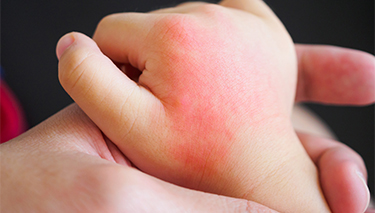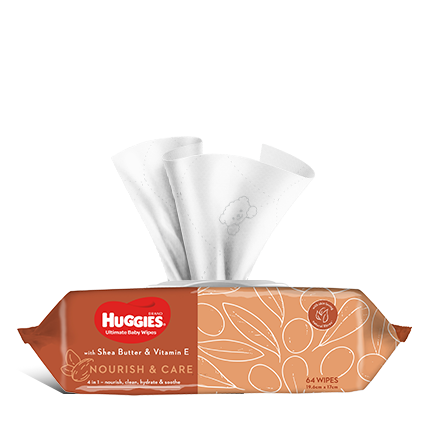Food pyramids and your baby’s health
What’s the point?
Food pyramids have been around for about 20 years. They offer us a simple, easy-to-follow guide to healthy eating. Naturally, no single diagram, rule or guideline can come close to being the sole answer to a healthy diet, but anything that helps us achieve this goal is welcome.
The use of a pyramid shape makes perfect sense. At the top, in the small space, are the foods we should eat less of while the larger sections down the bottom provide the foundations; we should be basing our diet on these foods. It’s all in one easy-to-read picture – and as they say, a picture conveys a thousands words. Australia’s most recognisable healthy eating pyramid is the Nutrition Australia’s Healthy Eating Pyramid; still, they stress that ‘optimal health is gained through food variety and physical activity.’ Click here to view the actual pyramid.
What do healthy eating pyramids tell us?
If you are like me, you may find the topic of healthy eating pyramids a bit of a yawn. But stay with me, as I’ve recently learned there are some interesting new ideas coming out of the United States that we are likely to hear about Down Under and in the land of the Long White Cloud.
Food pyramids generally reflect more specific guidelines called the Dietary Guidelines, which in most countries are updated every five years, indicating the rapid advances in our understanding of what constitutes a healthy diet. The American Dietary Guidelines were updated in 2005, emphasising weight control, being physically active, eliminating trans-fats, the importance of healthy fats, reducing sugar, and increasing wholegrains (replacing the more general and outdated notion of eating complex carbohydrates).
Here’s where it starts to get interesting. Some say that even these changes haven’t completely caught up with the current nutrition science. For example, the esteemed American Harvard School of Public Health (HSPH) has designed its own healthy eating pyramid (see Figure 1). As you can see, it includes a far wider set of ideas, and some foods have been shifted out of the bottom section into the ‘eat less section’. Our beloved potato is one example. (Mums, I can hear you groan as children tend to love potatoes.)
Remember, I am not saying that this pyramid is the ‘right’ one; indeed, there is room for thought on everything we are presented with. For example, even though potato is listed in this pyramid as an ‘eat less’ food, this is somewhat challenged by the antioxidant ratings (called ORAC) which list potato quite highly. (Phew! I hear you say, relaxing a little.) Our knowledge-base changes so fast; after all, it wasn’t so long ago we thought all fats were bad. Scary, isn’t it?
So what are the main messages? Keep the whole family moving
Given the growing numbers of overweight and obese adults and children, it is little wonder that physical activity features in most dietary guidelines around the world and increasingly in healthy eating pyramids. The World Health Organisation (WHO) rated lack of physical activity as one of the top five causes of death in the year 2000 (if we exclude tobacco).
No such thing as too much
Vegies, that is! Are those sighs of despair I hear? Are your children like mine, and won’t (knowingly) go near a vegie? It is our job as parents to be like Lynley Dodd’s, Slinky Malinki (fiendish and sly) and get the good stuff into them in whatever form or shape you can. Also try to include around two servings of fruit, if possible.
The whole package
Opt for wholegrains and food that resembles its origins, such as wholegrain breads and cereals, wholemeal pastas, brown rice. Some of you might be thinking, “My husband, let alone the kids, won’t eat brown rice”, but try incorporating it into your family’s diet rather than making a complete change. For example, use it in soups, mixed with white rice and so on. It’s better to do a little than nothing.
Not all fats are bad
Even trans-fats can’t be completely eliminated in a normal diet as they are found naturally in some unprocessed foods. However, we can limit them by avoiding the major sources such as processed meats and salami. Even saturated fat, which was once touted as the grand poohbar of bad fat, is required in small amounts for health as it forms the basis of many of our hormones – you know, those things that can send us a little crazy!
Eat ample good fat
Most of us are aware of the importance of eating foods that contain healthy fats such as fish, nuts, seeds, and so on. These have many health benefits ranging from improving skin condition, asthma, allergies, behaviour, inflammatory conditions, diabetes, and even cancer and other chronic illness. I am sure many more benefits will be discovered in the next few years.
Eat a varied healthy diet
When it comes to children: offer them a varied diet full of healthy foods. Variety is the spice of life and healthy food contains a range of nutrients.
Cultural differences
While many of the healthy eating pyramids don’t necessarily reflect more than one or two cultural eating patterns, the Mediterranean diet seems to be the ideal for good health. (While I don’t question its healthiness, I do wonder why the Japanese diet isn’t favoured given their longevity figures). The Mediterranean diet is just one of a number of alternative healthy eating pyramids (see diagram below). You can view these at www.oldwayspt.org . Oldways is a highly respected American non-profit food issues advocacy group. They describe a Mediterranean diet as the following:
- Make olive oil your primary source of dietary fat
- Incorporate an abundance of food from plant sources, including fruits and vegetables, breads, grains, beans, nuts, and seeds
- Eat low to moderate amounts of fish and poultry weekly
- Eat low to moderate amounts of cheese and yoghurt daily
- Drink a moderate amount of wine (one to two glasses per day for men, one glass perday for women) [obviously this isn’t relevant for children]
- Some other easy tips: Substitute olive oil for butter. Snack on almonds instead of fat-free cookies. Spread avocado on a sandwich to replace the mayonnaise.
Sourced at: http://www.oldwayspt.org/med_diet.html
Sourced at: http://www.oldwayspt.org/med_diet.html
So, as you can see, the old-fashioned healthy eating pyramid gets a regular make-over and is evolving to provide us with the best information at a glance.
Want to read more?
http://www.hsph.harvard.edu/nutritionsource/pyramids.html
http://www.health.gov.au (dietary guidelines)
http://www.oldwayspt.org
This information has been provided by Leanne Cooper from “Sneakys baby and child nutrition (Sneakys baby and child nutrition)”:http://www.sneakys.com.au/. Leanne is a qualified nutritionist and mother of two very active boys.
For more information see Baby Care
Last Published* May, 2024
*Please note that the published date may not be the same as the date that the content was created and that information above may have changed since.




















